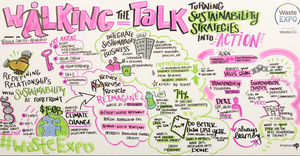Tech Trash Talk
Meeting the challenge of electronics recycling.
August 1, 2008
Electronic Waste Continues to be one of the hottest topics in our industry. Part of this stems from the fact that e-waste is the fastest growing segment of the waste stream, an explosion propelled by technological advances, such as the switch from analog to digital television sets, the introduction of new products like the iPhone, and a greater market for electronics as tech-savvy teens grow into tech-savvy adults. But fears about the environmental impact of the rising tide of discarded electronics also are helping fuel the discussion.
Unsurprisingly, the U.S. Environmental Protection Agency (EPA) has revised its data on electronic waste (see “Fact Sheet: Management of Electronic Waste in the United States,” July 2008, EPA 530-F-08-014). The agency estimates that while 20 million computers became obsolete in 1998, somewhere between 26 and 37 million became obsolete in 2005. Throw in TVs, cell phones and other marvels of the digital age and you have 304 million individual electronic products that were discarded in 2005.
Fortunately, all these products amount to a small percentage of the waste stream, less than one percent, or 1.9 to 2.2 million tons of solid waste. Approximately 1.5 to 1.8 million tons of this material was sent to disposal. While you've probably read that electronics products are highly “toxic” because they contain lead and can leach into groundwater, the fact is that they can be safely disposed in a landfill. EPA even testified before Congress that that the pH in a mature landfill is usually close to neutral (neutral pH is 7.0, while landfills measure around 6.8) making them a neutral, not acidic, environment. As such, cathode ray tubes (CRTs) in a Subtitle D landfill run little risk of leaching lead into the groundwater.
However, just because these products can be safely landfilled, doesn't mean they should be. We should make every effort to recover their valuable components instead of burying them. According to EPA, only about 345,000 to 379,000 tons were recycled in 2005. We can do better. Again, the good news is that our industry and the electronics industry are constantly developing new and better ways to collect and recycle used electronic products.
But we face significant challenges. Starting in February, television signals will be broadcast exclusively in a digital format. Analog television sets without a converter box or a cable television connection will be useless. While some people worry that we will be buried under an avalanche of instantly obsolete television sets, their fears are probably as well-grounded as the Y2K worries at the end of the last millennium (see “The (Ana)Log Jam,” Waste Age, May 2008). Nonetheless, the flow of electronics products headed for recycling or disposal will accelerate in the coming years.
Congress has held hearings on what to do about e-waste, but has taken no action. Instead, electronics recycling legislation is being vigorously passed at the state level. As of this writing, 16 states have passed laws requiring some kind of e-waste recycling program. The problem is, those 16 states have managed to go almost 16 different ways. For recycling companies and for manufacturers, this has created barriers to setting up cost efficient recycling programs. In spite of the confusion caused by these disparate laws, Congress is unlikely to do anything this year.
Next year, however, we may see the passage of significant federal e-waste legislation. Congress should learn from the mistakes of the past and make sure that a recycling infrastructure is in place before any disposal bans are imposed. We have a challenge ahead to ensure that the e-waste recycling rate goes up faster than the e-waste disposal rate. Given the right tools, we can meet this challenge.
For information on EIA, NSWMA and WASTEC, visit www.envasns.org.
You May Also Like


